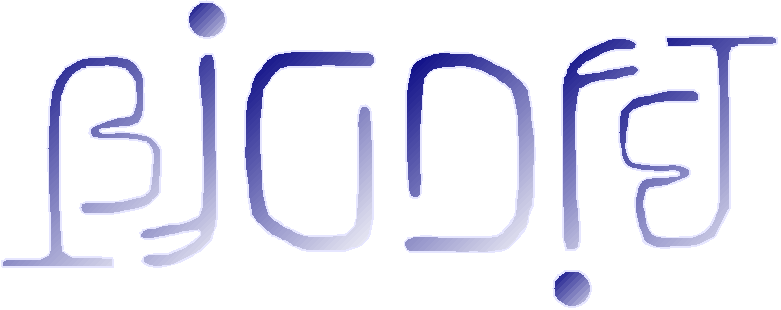We develop the following codes:
 DP
DP is an
ab initio linear-response TDDFT code working in reciprocal k-space and frequency ω-domain on a plane waves basis set. Its purpose is to calculate optical and dielectric spectroscopy, such as
- Optical Absorption, Refraction Indices, Reflectivity;
- EELS, IXSS (Inelastic X-ray Scattering Spectroscopy), CIXS.
Systems range from bulk to surfaces, wires/tubes, clusters and molecules (using supercells), made of insulator and metal elements. It implements the RPA and TDLDA approximations, but also non-local and ultra non-local kernels up to Bethe-Salpeter derived kernels. Including and neglecting local-field effects.
 BigDFT
BigDFT is an order N code using wavelet as basis set. It will be distributed inside the package of
ABINIT. It is based on wavelet functions which have some nice properties of locality in real space. Moreover, this basis set is systematic: the accuracy depends only on the grid step. The code is particularly well suited for the treatment of isolated systems (neutral or charged), or surfaces with proper boundary conditions. This new code can be helpful for chemists, physicists to perform the calculations of large molecules, molecules on surface or inhomogeneous systems.
 deMon
deMon (density of Montréal) is a software package for density-functional theory (DFT) calculations. It uses the linear combination of Gaussian-type orbital (LCGTO) approach for the self-consistent solution of the Kohn-Sham DFT equations. The calculation of the four-center electron repulsion integrals is avoided by introducing an auxiliary function basis for the variational fitting of the Coulomb potential. Some of the features of the deMon package are:
- Variational fitting of the Coulomb potential
- Geometry optimization and transition state search
- Molecular dynamic simulations
- Time-dependent DFT (TDDFT)
- Calculation of properties like polarizabilities, hyperpolarizabilities, NMR, IR and Raman spectra and intensities, thermodynamic data
 YAMBO
YAMBO
is an open source Many-body theory software package for study solids and molecular systems. It calculates the excited state properties of physical systems from first principles. With Yambo one can calculate: 1) Quasiparticle energies wtih plasmon pole, COHSEX approximation or real-axis; 2) Optical absorption, RPA, Bethe Salpeter with or without Tamm-Dancoff Approximation; 3) Electron energy loss spectroscopy; 4) Dynamical polarizability
 Fiesta
Fiesta a many-body theory software based on a gaussian-basis.
 ABINIT
ABINIT is a package whose main program allows one to find the total energy, charge density and electronic structure of systems made of electrons and nuclei (molecules and periodic solids) within Density-Functional Theory (DFT), using pseudopotentials and a planewave basis. ABINIT also includes options to optimize the geometry according to the DFT forces and stresses, or to perform molecular dynamics simulations using these forces, or to generate dynamical matrices, Born effective charges, and dielectric tensors. Excited states can be computed within the Time-Dependent Density-Functional Theory (for molecules), or within Many-Body Perturbation Theory (the GW approximation).
 EXC
EXC is an
ab initio linear-response Bethe-Salpeter Equation code working both in transition space and also in reciprocal k-space and frequency ω-domain on a plane waves basis set. Its purpose is to calculate optical and dielectric spectroscopy, such as optical absorption, refraction indices, reflectivity, EELS.
Systems range from bulk to surfaces, wires/tubes, clusters and molecules (using supercells), made of insulator and metal elements. Full coupling (beyond the Tamm-Dancoff approximation) and local-field effects can be switched on and off.

The
CPMD code is a parallelized plane wave/pseudopotential implementation of Density Functional Theory, particularly designed for ab-initio molecular dynamics.
Hilbert++
Hilbert++ is a cluster many-body code.
We use the following codes:
 DP is an ab initio linear-response TDDFT code working in reciprocal k-space and frequency ω-domain on a plane waves basis set. Its purpose is to calculate optical and dielectric spectroscopy, such as
DP is an ab initio linear-response TDDFT code working in reciprocal k-space and frequency ω-domain on a plane waves basis set. Its purpose is to calculate optical and dielectric spectroscopy, such as
 Fiesta a many-body theory software based on a gaussian-basis.
Fiesta a many-body theory software based on a gaussian-basis.